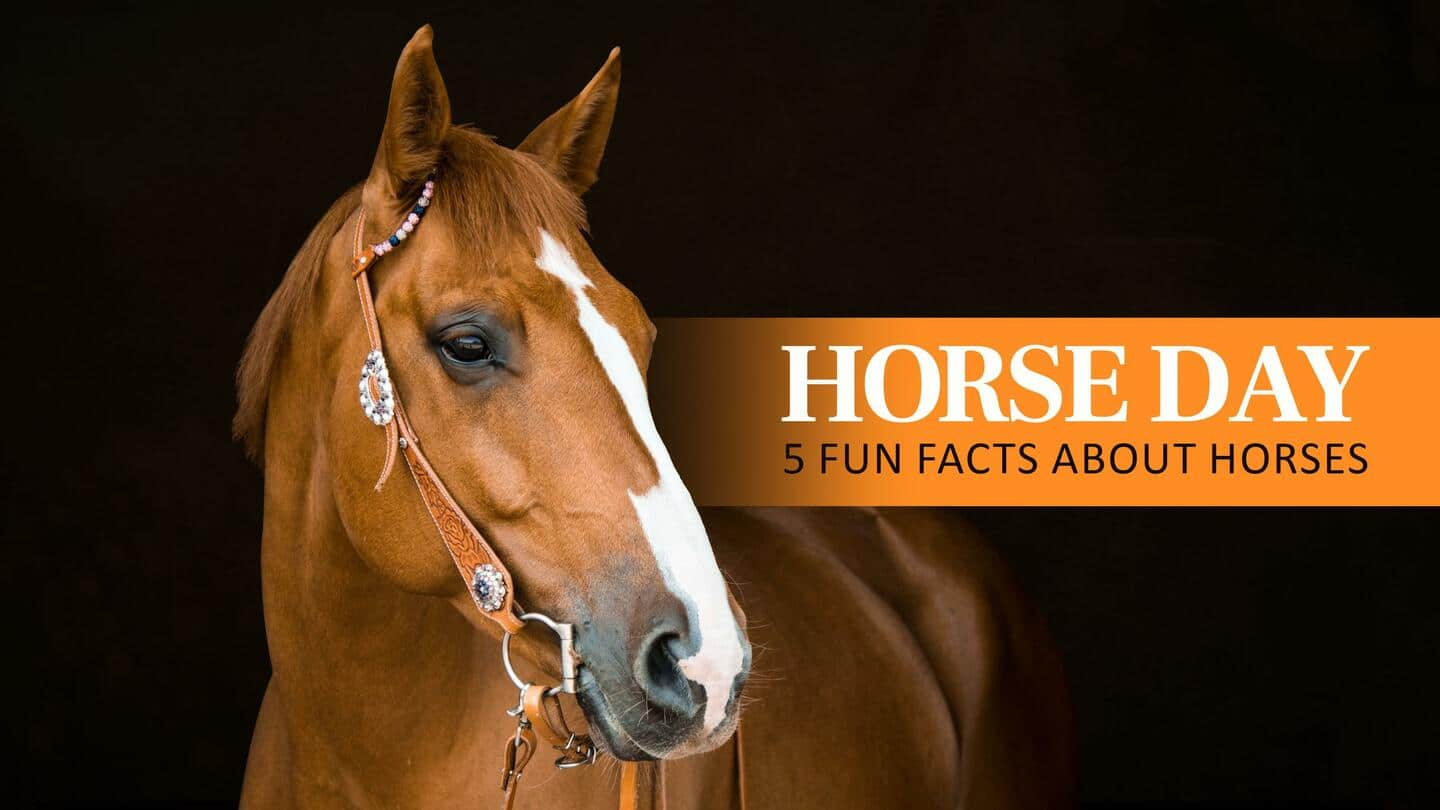
Horse day: 5 fascinating facts you should know about them
What's the story
National Horse Day is celebrated every December 13. This day has been created to remember and pay tribute to the cultural, historical, and economical contributions made by horses. One of the most magnificent creatures on earth, horses have existed for more than 55 million years. In honor of these widely adored animals, here are five fascinating facts you probably didn't know about them.
Stay apparatus
Horses can sleep standing up
Horses can sleep lying down, but also while standing up. They are able to snooze while they stand because of a special arrangement of muscles and the parts that connect muscles and bones together. This is called the stay apparatus that locks their kneecaps. However, horses must lie down for a minimum of 30 minutes to achieve a fully restorative sleep cycle.
Human-horse bond
Bonding between humans and horses started 6,000 years ago
Horses are a late addition to the list of animals domesticated by humans. Dogs were domesticated probably about 15,000 years ago; sheep, pigs, and cattle, about 8,000 to 11,000 years ago, and cats around 8,500 years ago. Human's friendship with horses started around 6000 years ago. Genetic evidence indicates that horses were likely domesticated first in an area known as Volga-Don in western Eurasia.
360-degree FOV
Horses have a nearly 360-degree field of vision
Horses have a wide field of vision because of the positioning of their eyes on the sides of their head. However, they have two blind spots - one just behind them and the other right in front of their head. That means they cannot see what they are grazing on! Instead, they use their lips, whiskers, and smell to know what's in front of them.
Survival instinct
Horses cannot vomit
Some research accredits horses' inability to vomit as their survival instinct. Horses in the wild would avoid vomiting to be less susceptible to predators in the wild. This evolutionary trait among horses disallows them to vomit because the muscles surrounding their gastrointestinal tract are too tight. Other researchers believe that their choosiness about food takes away their need to vomit.
Muscular ears
Horses have excellent hearing
Horses' ears are small but contain 10 muscles each. Their ears can also move 180 degrees. These elegant herbivores can distinguish and identify sounds by directing their hearing to specific areas. Horses use their ears to communicate, for example, by pinning them back they indicate anger or seek guidance. A study also found that horses use their ears to direct one other.